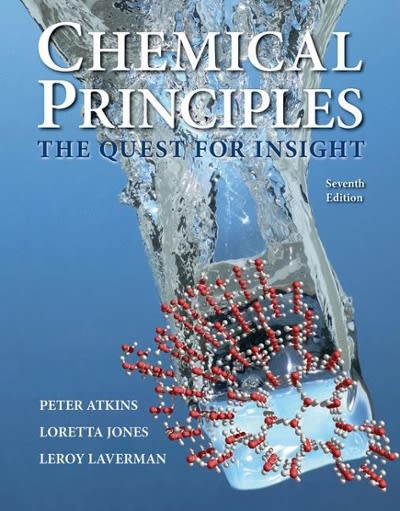A common antiseptic used in first aid for cuts and scrapes is a 3% aqueous solution of
Question:
A common antiseptic used in first aid for cuts and scrapes is a 3% aqueous solution of hydrogen peroxide. The oxygen that bubbles out of the hydrogen peroxide as it is decomposed by enzymes in blood into oxygen and water helps to clean the wound. Two possible industrial routes for the synthesis of hydrogen peroxide are (i) H2 (g) + O2(g) → H2O2(l), which uses either a metal such as palladium or the organic compound quinone as catalyst, and (ii) 2 H2O(l) + O2(g) → 2 H2O2(l).
(a) At 298 K and 1 atm, which method releases more energy per mole of O2?
(b) Which method has the more negative standard Gibbs free energy?
(c) Once hydrogen peroxide has been used at home, can it be regenerated easily from oxygen and water?
Step by Step Answer:

Chemical Principles The Quest For Insight
ISBN: 9781464183959
7th Edition
Authors: Peter Atkins, Loretta Jones, Leroy Laverman





